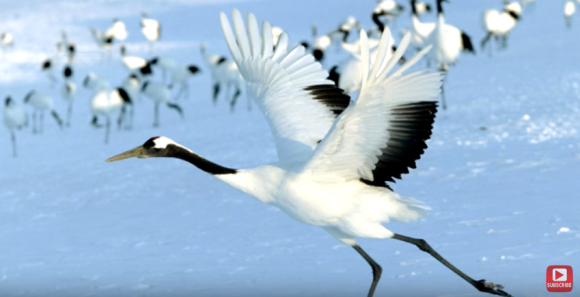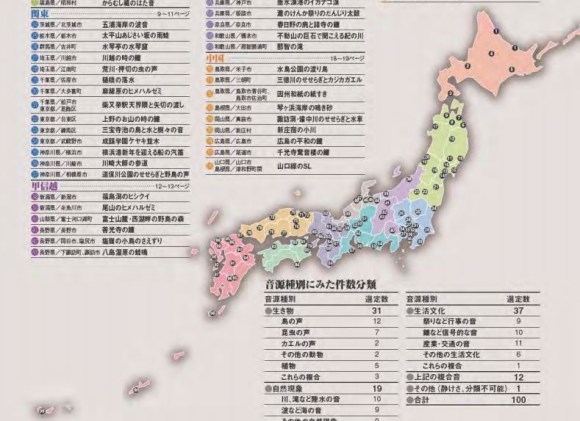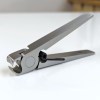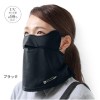
“The 100 what??” That was our initial reaction too, but the official list is just what it sounds like!
Many of you know at least a few famous natural landscapes or must-see places scattered throughout Japan, such as the government-designated Places of Scenic Beauty or the UNESCO World Heritage Sites. But how many of you are familiar with the 100 Soundscapes of Japan?
The term “soundscape” might sound strange, but it’s meant to be an equivalent of the term “landscape”–like candy for your ears. In 1996, Japan’s Ministry of the Environment actually designated 100 symbolic phenomena throughout the country as official Soundscapes of Japan in an effort to both preserve those sounds for future generations to come and to combat noise pollution. The 100 phenomena were chosen from 738 entries by the Japan Soundscape Study Group (yes, a real entity), and span the entire length of the island nation, from the northernmost island of Hokkaido to the southern islands of Okinawa.
▼ A visual map of all 100 soundscapes across Japan
Furthermore, the list includes not only natural world soundscapes covering all four seasons, but also soundscapes of important intangible Japanese cultural artifacts and regional trades. In other words, there’s more than just the quintessential Japanese summer buzzing of cicadas or the gushing of waterfalls; the memorable sounds of a fair number of Japanese festivals and traditional handcrafts being produced are also included!
Below, we’ve gathered a mixed sampling of fifteen of the soundscapes for your viewing aural pleasure. Enjoy!
▼ Soundscape #1: Drift ice in the Sea of Okhotsk (Hokkaido)
▼ Soundscape #5: Japanese crane sanctuary, Tsurui (Hokkaido)
▼ Soundscape #12: Bells of Chagu Chagu Umakko Festival (Iwate Prefecture) (skip to 7:20)
This horse festival held every June was designated an Intangible Folk Cultural Property by the Japanese government Chagu chagu is onomatopoeia for the sound of the bells fitted onto the horses’ colorful decorations.
▼ Soundscape #18: Cicadas at Yamadera (Yamagata Prefecture)
Haiku master Matsuo Basho (1644-1694) composed this famous poem at Yamadera: Stillness / Seeping into rocks / A cicada’s cry
▼ Soundscape #23: Weaving of ramie fabric (Fukushima Prefecture) (skip to 4:40)
Fukushima Prefecture’s Showa Village is renowned for the centuries-old handcraft of weaving ramie textiles, known as karamushi-ori in Japanese.
▼ Soundscape #35: Ship whistles for the New Year at Yokohama Port (Kanagawa Prefecture)
▼ Soundscape #48: Isobue whistling of female divers in Ise-Shima area (Mie Prefecture) (skip to 2:30)
▼ Soundscape #52: Shomyo Falls (Toyama Prefecture)
▼ Soundscape #62: Squeaking sand of Kotobikihama Beach (Kyoto Prefecture)
This beach is one of the few places in Japan where the sand makes a unique “singing” sound when you walk on it.
▼ Soundscape #71: Mitoku River and singing frogs (Tottori Prefecture)
https://www.youtube.com/watch?v=pWM1ePKJu4g
▼ Soundscape #76: Bell of Peace in Hiroshima (Hiroshima Prefecture)
▼ Soundscape #79: Naruto whirlpools (Tokushima Prefecture)
▼ Soundscape #80: Awa Odori Festival (Tokushima Prefecture)
This summer festival is the largest dance festival in Japan. Awa refers to the former feudal administrative region of Tokushima, and odori means dance.
▼ Soundscape #89: Imari Pottery (Saga Prefecture) (skip to 19:20)
Imari porcelain, also known as Arita porcelain, is a type of pottery that was particularly popular with Europeans in the second half of the 17th century.
▼ Soundscape #100: Eisa Festival (Okinawa Prefecture)
Eisa is a type of Okinawan folk dance performed in lines or circles to the accompaniment of singing, chanting, and drumming.
If you enjoyed the entries above and want to read the full list, Japan’s Ministry of the Environment provides a free pamphlet download with detailed descriptions of all 100 of the soundscapes (Japanese only). Happy sound hunting, everyone!
Sources: Wikipedia (English), Wikipedia (Japanese)
Top image: YouTube/Soul Candle
Insert image: Japan Ministry of the Environment


 W.T.F. Japan: Top 5 nicest sounds in Japan【Weird Top Five】
W.T.F. Japan: Top 5 nicest sounds in Japan【Weird Top Five】 Japan petitions to add 40 traditional folk dances to UNESCO’s Intangible Cultural Heritage list
Japan petitions to add 40 traditional folk dances to UNESCO’s Intangible Cultural Heritage list Silent Bon odori dance?! Japan’s traditional summer festival gets a modern twist
Silent Bon odori dance?! Japan’s traditional summer festival gets a modern twist Japanese pop culture festival and concert to be held in Tokyo next month, foreigners get in for free!
Japanese pop culture festival and concert to be held in Tokyo next month, foreigners get in for free! Fights break out at Japanese fight festival
Fights break out at Japanese fight festival Ramen restaurant’s English menu prices are nearly double its Japanese ones, denies discriminating
Ramen restaurant’s English menu prices are nearly double its Japanese ones, denies discriminating Here’s what our bachelor writers ate over the New Year’s holiday in Japan
Here’s what our bachelor writers ate over the New Year’s holiday in Japan Japanese beef bowl chain Sukiya’s 2026 Smile Box lucky bag basically pays for itself
Japanese beef bowl chain Sukiya’s 2026 Smile Box lucky bag basically pays for itself Cups made of kelp from Hokkaido add a touch of umami to whatever you put inside
Cups made of kelp from Hokkaido add a touch of umami to whatever you put inside Expensive Japanese nail clippers: Are they worth it?
Expensive Japanese nail clippers: Are they worth it? Japanese thug wear from Birth Japan perfect for those breaking bad next year
Japanese thug wear from Birth Japan perfect for those breaking bad next year Our resident illustrator dramatically corrects an amateur drawing in 10 minutes
Our resident illustrator dramatically corrects an amateur drawing in 10 minutes Why is Starbucks Japan’s Christmas stollen so good?
Why is Starbucks Japan’s Christmas stollen so good? New sun protection mask becomes popular in Japan
New sun protection mask becomes popular in Japan Pringles teams up with Hello Kitty for new Sanrio collection in Japan
Pringles teams up with Hello Kitty for new Sanrio collection in Japan Starbucks Japan ready to get Year of the Horse started with adorable drinkware and plushies【Pics】
Starbucks Japan ready to get Year of the Horse started with adorable drinkware and plushies【Pics】 Hayao Miyazaki says Happy New Year to Studio Ghibli fans with new art for Year of the Horse
Hayao Miyazaki says Happy New Year to Studio Ghibli fans with new art for Year of the Horse Cup Noodle tries an authentic Jiro-style ramen, but something’s not quite right
Cup Noodle tries an authentic Jiro-style ramen, but something’s not quite right Top Japanese cosplayer Enako returns to Comiket after 6 years, creates mayhem with admirers
Top Japanese cosplayer Enako returns to Comiket after 6 years, creates mayhem with admirers The best Starbucks Japan Frappuccinos we want to drink again in 2026
The best Starbucks Japan Frappuccinos we want to drink again in 2026 We revisited Sweets Paradise after a decade to see if Japan’s dessert buffet still delivers
We revisited Sweets Paradise after a decade to see if Japan’s dessert buffet still delivers That time Seiji called JASRAC to ask why he didn’t get paid royalties for his song being on TV
That time Seiji called JASRAC to ask why he didn’t get paid royalties for his song being on TV Pizza Hut Japan’s hot lucky bags are perfect for a New Year’s pizza party
Pizza Hut Japan’s hot lucky bags are perfect for a New Year’s pizza party Majority of Japanese mayors say foreign residents are essential but most see good and bad effects
Majority of Japanese mayors say foreign residents are essential but most see good and bad effects 7-Eleven Japan starts new temporary luggage storage service in over 300 branches
7-Eleven Japan starts new temporary luggage storage service in over 300 branches Disillusionment at Tsukiji’s tourist-target prices led us to a great ramen restaurant in Tokyo
Disillusionment at Tsukiji’s tourist-target prices led us to a great ramen restaurant in Tokyo Starbucks teams up with 166-year-old Kyoto doll maker for Year of the Horse decorations【Photos】
Starbucks teams up with 166-year-old Kyoto doll maker for Year of the Horse decorations【Photos】 Tokyo considering law requiring more trash cans following litter increase in heavily touristed area
Tokyo considering law requiring more trash cans following litter increase in heavily touristed area Tokyo’s Tsukiji sushi neighborhood asks tour groups to stay away for the rest of the month
Tokyo’s Tsukiji sushi neighborhood asks tour groups to stay away for the rest of the month Tokyo event lets you travel back in time, for free, to celebrate 100 years since Showa era start
Tokyo event lets you travel back in time, for free, to celebrate 100 years since Showa era start Japan may add Japanese language proficiency, lifestyle classes to permanent foreign resident requirements
Japan may add Japanese language proficiency, lifestyle classes to permanent foreign resident requirements Sanrio theme park in Japan announces plans to expand into a Sanrio resort
Sanrio theme park in Japan announces plans to expand into a Sanrio resort Lacquerware supplier to emperor of Japan and Pokémon team up for new tableware
Lacquerware supplier to emperor of Japan and Pokémon team up for new tableware Survey asks foreign tourists what bothered them in Japan, more than half gave same answer
Survey asks foreign tourists what bothered them in Japan, more than half gave same answer Japan’s human washing machines will go on sale to general public, demos to be held in Tokyo
Japan’s human washing machines will go on sale to general public, demos to be held in Tokyo Japan’s deadliest food claims more victims, but why do people keep eating it for New Year’s?
Japan’s deadliest food claims more victims, but why do people keep eating it for New Year’s? We deeply regret going into this tunnel on our walk in the mountains of Japan
We deeply regret going into this tunnel on our walk in the mountains of Japan Studio Ghibli releases Kodama forest spirits from Princess Mononoke to light up your home
Studio Ghibli releases Kodama forest spirits from Princess Mononoke to light up your home Major Japanese hotel chain says reservations via overseas booking sites may not be valid
Major Japanese hotel chain says reservations via overseas booking sites may not be valid Put sesame oil in your coffee? Japanese maker says it’s the best way to start your day【Taste test】
Put sesame oil in your coffee? Japanese maker says it’s the best way to start your day【Taste test】 No more using real katana for tourism activities, Japan’s National Police Agency says
No more using real katana for tourism activities, Japan’s National Police Agency says Starbucks Japan reveals new sakura drinkware collection, inspired by evening cherry blossoms
Starbucks Japan reveals new sakura drinkware collection, inspired by evening cherry blossoms Updated cherry blossom forecast shows extra-long sakura season for Japan this year
Updated cherry blossom forecast shows extra-long sakura season for Japan this year Singing, ticking timebombs – 5 facts about the special significance of cicadas in Japan
Singing, ticking timebombs – 5 facts about the special significance of cicadas in Japan Japan’s biggest Obon dance festival makes its international debut in Paris
Japan’s biggest Obon dance festival makes its international debut in Paris Japan’s Kodo taiko group creates awesome new performance with 3D sound technology
Japan’s Kodo taiko group creates awesome new performance with 3D sound technology Amazingly beautiful animated fireworks show Japan’s fireworks are on a whole other level【Videos】
Amazingly beautiful animated fireworks show Japan’s fireworks are on a whole other level【Videos】 Lightning strikes moving train in Japan 【Video】
Lightning strikes moving train in Japan 【Video】 This hot springs town in Japan sets fire across a mountain every winter in a beautiful tradition
This hot springs town in Japan sets fire across a mountain every winter in a beautiful tradition W.T.F. Japan: Top 5 most annoying sounds in Japan 【Weird Top Five】
W.T.F. Japan: Top 5 most annoying sounds in Japan 【Weird Top Five】 Akutai Matsuri: Japan’s Verbal Abuse Festival, where insults and bad behaviour are encouraged
Akutai Matsuri: Japan’s Verbal Abuse Festival, where insults and bad behaviour are encouraged Help Japan’s dairy industry in style, using 100-yen milk carton covers
Help Japan’s dairy industry in style, using 100-yen milk carton covers Breathtaking Nagaoka Fireworks Will Make You Want to Spend a Summer in Japan
Breathtaking Nagaoka Fireworks Will Make You Want to Spend a Summer in Japan Japan has a festival where they straight-up throw dudes into a fire【Videos】
Japan has a festival where they straight-up throw dudes into a fire【Videos】 LIGHT UP NIPPON 2014 pays tribute to the Great East Japan Earthquake with a booming spectacle
LIGHT UP NIPPON 2014 pays tribute to the Great East Japan Earthquake with a booming spectacle Photographer captures fantastical images of a fire-walking festival in northern Japan【Photos】
Photographer captures fantastical images of a fire-walking festival in northern Japan【Photos】 Diamond Route Japan series shows off all the beautiful reasons to travel outside of Tokyo【Videos】
Diamond Route Japan series shows off all the beautiful reasons to travel outside of Tokyo【Videos】 Who knew Daiso’s 100-yen kitchen knives can become shockingly sharp with the right tools?【Video】
Who knew Daiso’s 100-yen kitchen knives can become shockingly sharp with the right tools?【Video】 New Taiiku Okazaki song is in Japanese but strangely sounds like English
New Taiiku Okazaki song is in Japanese but strangely sounds like English
Leave a Reply